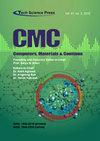鲸鱼优化算法中基于适应度位置更新的植物识别
IF 1.7
4区 计算机科学
Q3 COMPUTER SCIENCE, INFORMATION SYSTEMS
引用次数: 2
摘要
从一开始,人类就依靠植物来获取食物、能量和药物。植物是通过叶子、花或果实来识别的,并与它们相关联。分类方法用于提取和选择有助于识别植物的性状。在植物叶片图像分类中,每个植物根据其分类被分配一个标签。植物叶片图像分类的目的是使农民能够识别植物,从而从几个方面对植物进行管理。本研究旨在提出一种改进的鲸鱼优化算法,并对植物叶片图像进行分类。这种改进的算法适用于不同的植物叶片组。该算法检测了几个性能良好的基准函数。在10幅植物叶片图像上对该分类方法进行了验证。该模型计算了10种不同植物叶片图像数据集的精度、召回率、f值和准确度,并将这些参数与其他现有算法进行了比较。实验数据表明,该方法的精度优于所考虑的其他算法,精度提高了5%。本文章由计算机程序翻译,如有差异,请以英文原文为准。
Plant Identification Using Fitness-Based Position Update in Whale Optimization Algorithm
: Since the beginning of time, humans have relied on plants for food, energy, and medicine. Plants are recognized by leaf, flower, or fruit and linked to their suitable cluster. Classification methods are used to extract and select traits that are helpful in identifying a plant. In plant leaf image categorization, each plant is assigned a label according to its classification. The purpose of classifying plant leaf images is to enable farmers to recognize plants, leading to the management of plants in several aspects. This study aims to present a modified whale optimization algorithm and categorizes plant leaf images into classes. This modified algorithm works on different sets of plant leaves. The proposed algorithm examines several benchmark functions with ade-quate performance. On ten plant leaf images, this classification method was validated. The proposed model calculates precision, recall, F-measurement, and accuracy for ten different plant leaf image datasets and compares these parameters with other existing algorithms. Based on experimental data, it is observed that the accuracy of the proposed method outperforms the accuracy of different algorithms under consideration and improves accuracy by 5%.
求助全文
通过发布文献求助,成功后即可免费获取论文全文。
去求助
来源期刊

Cmc-computers Materials & Continua
工程技术-材料科学:综合
CiteScore
5.30
自引率
19.40%
发文量
345
审稿时长
1 months
期刊介绍:
This journal publishes original research papers in the areas of computer networks, artificial intelligence, big data management, software engineering, multimedia, cyber security, internet of things, materials genome, integrated materials science, data analysis, modeling, and engineering of designing and manufacturing of modern functional and multifunctional materials.
Novel high performance computing methods, big data analysis, and artificial intelligence that advance material technologies are especially welcome.
 求助内容:
求助内容: 应助结果提醒方式:
应助结果提醒方式:


